SDG GOAL 1
NO POVERTY
End poverty in all its forms everywhere
|
|
DIRECT NAVIGATION TO INDIVIDUAL WEBPAGE FOR EACH GOAL |
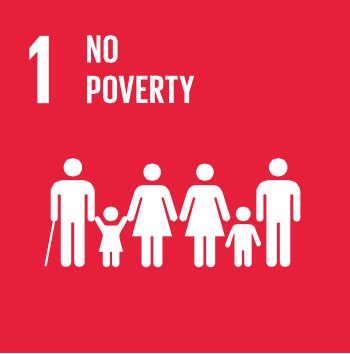
|
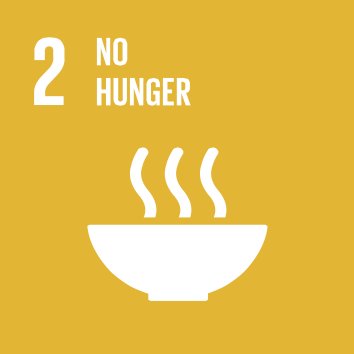
|
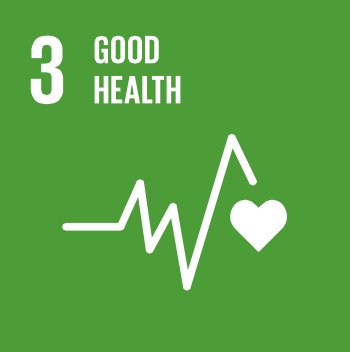
|
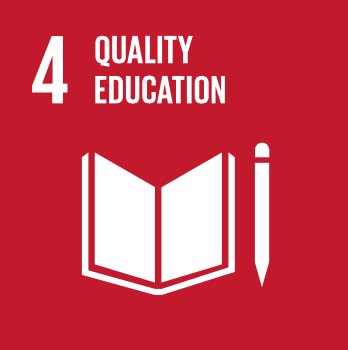
|
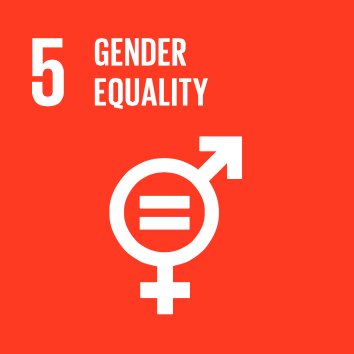
|
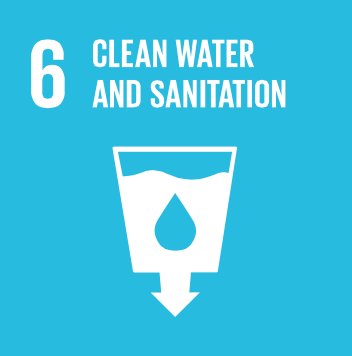
|
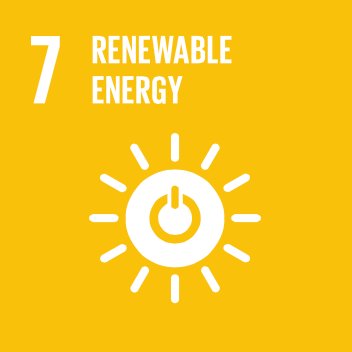
|
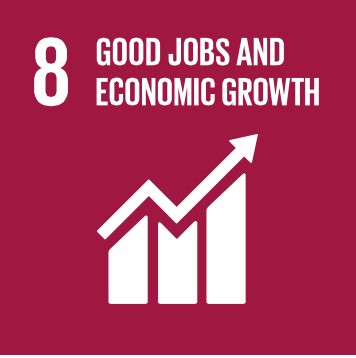
|
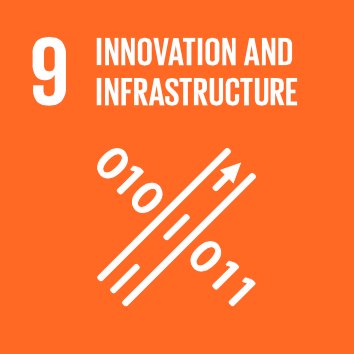
|
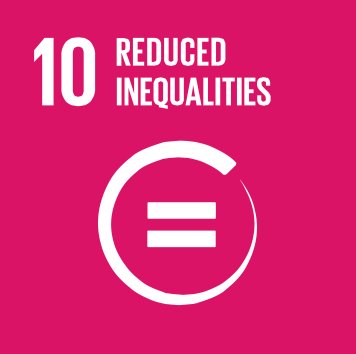
|
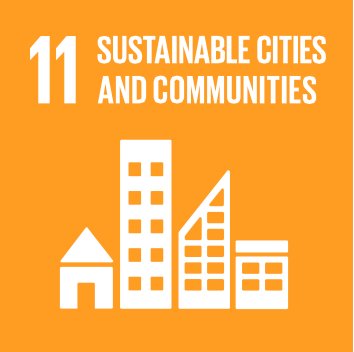
|
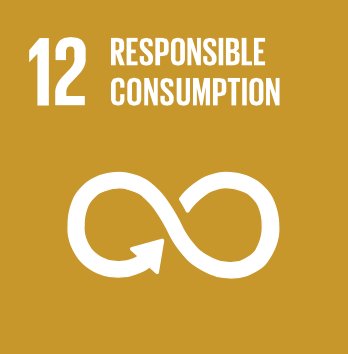
|
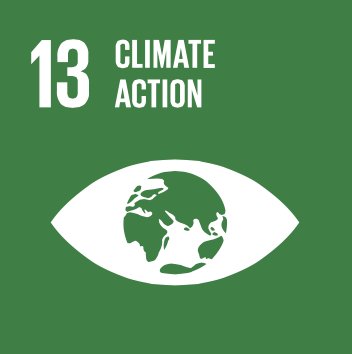
|
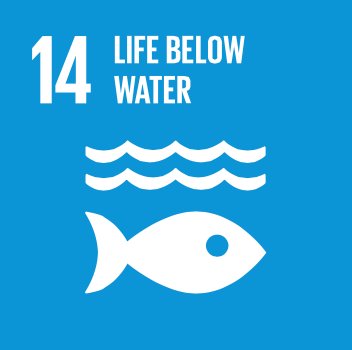
|
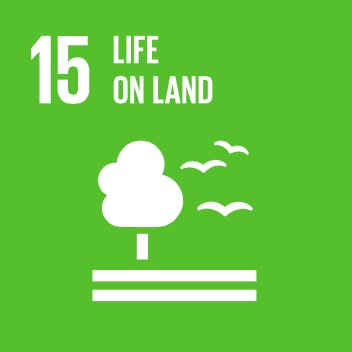
|
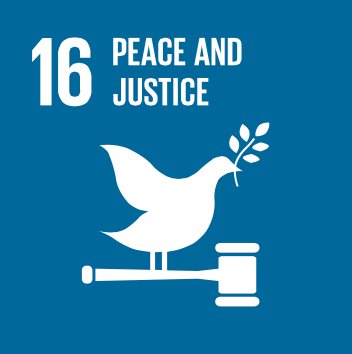
|
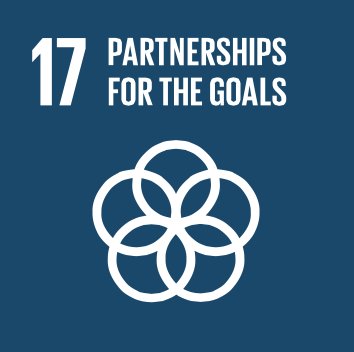
|
|

|
End poverty in all its forms everywhere
The removal of poverty requires a deep understanding of how the socio-enviro-economic system works and the decisions that have to be made in order to get to this outcome.
The idea of classical Western economics that efficient markets and self interest will achieve this outcome in the most efficient way has not been proven by experience, rather the experience is that economic efficiency as practiced in the capitalist framework results in a concentration of wealth and rather little 'trickle down' to the masses. This is to be expected when the dominant metric of success is money wealth with no consideration of the impact of financial wealth on society and the environment.
|
|
|
Goals and targets
|
Indicators
|
|
1.1
|
By 2030, eradicate extreme poverty for all people everywhere, currently measured as people living on less than $1.25 a day
|
1.1.1 Proportion of population below the international poverty line, by sex, age, employment status and geographical location (urban/rural)
|
|
1.2
|
By 2030, reduce at least by half the proportion of men, women and children of all ages living in poverty in all its dimensions according to national definitions
|
1.2.1 Proportion of population living below the national poverty line, by sex and age
1.2.2 Proportion of men, women and children of all ages living in poverty in all its dimensions according to national definitions
|
|
1.3
|
Implement nationally appropriate social protection systems and measures for all, including floors, and by 2030 achieve substantial coverage of the poor and the vulnerable
|
1.3.1 Proportion of population covered by social protection floors/systems, by sex, distinguishing children, unemployed persons, older persons, persons with disabilities, pregnant women, newborns, workinjury victims and the poor and the vulnerable
|
|
1.4
|
By 2030, ensure that all men and women, in particular the poor and the vulnerable, have equal rights to economic resources, as well as access to basic services, ownership and control over land and other forms of property, inheritance, natural resources, appropriate new technology and financial services, including microfinance
|
1.4.1 Proportion of population living in households with access to basic services
1.4.2 Proportion of total adult population with secure tenure rights to land, with legally recognized documentation and who perceive their rights to land as secure, by sex and by type of tenure
|
|
1.5
|
By 2030, build the resilience of the poor and those in vulnerable situations and reduce their exposure and vulnerability to climate-related extreme events and other economic, social and environmental shocks and disasters
|
1.5.1 Number of deaths, missing persons and persons affected by disaster per 100,000 people a
1.5.2 Direct disaster economic loss in relation to global gross domestic product (GDP)a
1.5.3 Number of countries with national and local disaster risk reduction strategies a
|
|
1.a
|
Ensure significant mobilization of resources from a variety of sources, including through enhanced development cooperation, in order to provide adequate and predictable means for developing countries, in particular least developed countries, to implement programmes and policies to end poverty in all its dimensions
|
1.a.1 Proportion of resources allocated by the government directly to poverty reduction programmes
1.a.2 Proportion of total government spending on essential services (education, health and social protection)
|
|
1.b
|
Create sound policy frameworks at the national, regional and international levels, based on pro-poor and gender-sensitive development strategies, to support accelerated investment in poverty eradication actions
|
1.b.1 Proportion of government recurrent and capital spending to sectors that disproportionately benefit women, the poor and vulnerable groups
|
Indicator 1: Percentage of population below $1.25 (PPP) per day (MDG Indicator)
Rationale and definition:
This MDG Indicator is defined as the percentage of the population living below the international poverty line, where the average daily consumption (or income) is less than $1.25 per person per day. The $1.25 threshold is a measure of extreme income poverty that allows comparisons to be made across countries when it is converted using purchasing power parity (PPP) exchange rates for consumption. In addition, poverty measures based on an international poverty line attempt to hold the real value of the poverty line constant over time, allowing for assessments of progress toward meeting the goal of eradicating extreme poverty.23
Disaggregation:
By sex, age, urban/rural, and other qualifiers. Of particular importance is to identify the sex of the head of the household since households headed by women may be more likely to experience extreme poverty.
Comments and limitations:
The poverty rate has the drawback that it does not capture the depth of poverty; some people may be living just below the poverty line, while others are far below. To help capture disparities, data should as much as possible be disaggregated by sex, age, ethnicity, geography, and other attributes within a population. The SDSN also proposes to include a separate indicator for urban income poverty, as the $1.25 poverty line is poorly adapted to urban environments where basic services (housing, water, energy, etc.) need to be purchased.
Preliminary assessment of current data availability by Friends of the Chair:
B
Potential lead agency or agencies:
World Bank.
21 The Friends of the Chair Group (FOC) on broader measures of progress was established by the United Nations Statistical Commission as a response to the request of the Rio+20 conference to launch a programme of work on broader measures of progress to complement GDP in order to better inform policy decisions. See: http://unstats.un.org/unsd/broaderprogress/about.html
22 UN Statistics Division, (2014).
23 United Nations, (2003).
Revised working draft (July 25, 2014) 31
|
Indicator 2: Percentage of population living below national poverty line (MDG Indicator)
Rationale and definition: This modified MDG Indicator is defined as the percentage of the population living below the national poverty line, where the average daily consumption (or income) is less than a certain amount per person per day. These poverty thresholds are defined at the country level below which a person is deemed to be poor. The national poverty line should be differentiated for urban versus rural settings within the country to account for differences in cost of living.
Disaggregation: By sex, age, and other qualifiers. Of particular importance is to identify the sex of the head of the household since households headed by women may be more likely to experience poverty.
Comments and limitations: National poverty lines do not provide a uniform measure, so this indicator does not allow for direct comparison across countries.
Preliminary assessment of current data availability by Friends of the Chair: B
Potential lead agency or agencies: World Bank, UN-DESA.
|
Indicator 3: Percentage of population covered by social protection programs
Rationale and definition: Access to adequate social protection is recognized as a basic right, enshrined in the Universal Declaration of Human Rights, but more than half of the world’s population lacks social protection coverage.24 This indicator measures the percentage of the population covered by these social safety nets. The ILO includes the following ten elements as part of comprehensive social security coverage: medical care, sickness benefits, and protection of disability, old age, survivor, maternity, children, unemployment, employment injury, and general protection against poverty and social exclusion.25 The most common types of social protection are labor market interventions to promote employment and protect workers, social insurance such as health or unemployment insurance, and social assistance to support vulnerable individuals or households. New instruments of social protection have also gained popularity, including conditional cash transfers.
Disaggregation: By gender, age, urban/rural, and by type (medical, employment etc).
Comments and limitations: In practice, access to social security can be limited by discrimination, which may not be captured here.
Preliminary assessment of current data availability by Friends of the Chair: To be determined. Potential lead agency or agencies: ILO.
24 UN Research Institute For Social Development, (2010), Combating Poverty and Inequality: Structural Change, Social Policy and Politics, Geneva, Switzerland: UNRISD. http://www.unrisd.org/ 25 See ILO Social protection website: http://www.ilo.org/global/topics/social-security
Revised working draft (July 25, 2014) 32
|
Indicator 4: Percentage of women and men in rural areas with secure rights to land, measured by (i) percentage with documented rights to land, and (ii) percentage who do not fear arbitrary dispossession of land
Rationale and definition: Whether the rural poor can secure tenure over the land and natural resources on which they depend has important implications for economic development and poverty reduction. Yet for many rural poor households, access to land and natural resources is increasingly undermined. In particular, controversies involving large-scale land acquisitions by foreign and domestic investors have placed land rights and the issue of responsible agricultural investment firmly on the global development agenda. This proposed new indicator comprises two components: (i) percentage with documented rights to land and (ii) percentage who do not fear arbitrary dispossession of land. Documentation and perception provide critical and complementary information on tenure security. In addition, they both highlight outcomes and on-the-ground realities. The proposed focus on “documented rights” is flexible enough to cover a range of tenure rights in different country contexts. Because documentation alone, while important, is often not sufficient to gauge true tenure security, the perception measure provides valuable complementary information. In addition, the perception measure may facilitate more useful comparisons across countries.
Disaggregation: Opportunities for disaggregation to be reviewed.
Comments and limitations: The urban component is under target 7b.
Preliminary assessment of current data availability by Friends of the Chair: C
Potential lead agency or agencies: FAO, UNDP
|
Indicator 5: Losses from disasters, by climate and non-climate-related events, by urban/rural (in US$ and in lives lost)
Rationale and definition: Cities around the world, as well as rural populations, are at growing risk from natural hazards, including extreme climate-related events that are projected to increase in frequency and severity as a result of climate change. Population growth and urbanization will also affect vulnerability and exposure. This indicator measures losses, both lives lost and economic costs, in urban and rural areas due to natural disasters,26 disaggregated by climate and non-climate-related events. Extreme climate-related natural disasters include the following: (i) hydro-meteorological events (storms, floods, mass movements (wet)) and (ii) climatological events (extreme temperature, drought, wildfire).27 Non-climate-related natural disasters consist primarily of geophysical events (earthquakes, volcano eruptions, tsunamis, dry mass movements). Other disasters that may be climate or non-climate related include biological events (epidemics, insect infestations, animal stampedes). If in doubt, we propose that the events be categorized as “non-climate related.”
26 Consistent with the definitions used by CRED and the Munich database, we use the term ‘natural disasters’ to comprise biological, geophysical, meteorological, hydrological, climatological and extra-terrestrial disasters. There is growing evidence that some climaterelated disasters are due to anthropogenic climate change and may therefore not be termed “natural”, but given the difficulty involved in establishing causality we propose to include them under natural disasters. See Below, R., A. Wirtz, and D. Guha-Sapir, (2009), Disaster Category Classification and peril Terminology for Operational Purposes, Working Paper, Centre for Research on the Epidemiology of Disasters (CRED) and Munich Reinsurance Company (Munich RE), Brus
27 As defined by the EM-DAT, the International Disasters Database, managed by the Centre for Research on the Epidemiology of Disasters (CRED) at the University of Louvain. Available at http://www.emdat.be/classification
Revised working draft (July 25, 2014) 33
Effective adaptation and disaster risk reduction measures are needed to reduce the economic and social impact of natural disasters, including extreme climate events, on agriculture and rural areas. The economic dimensions of this indicator would track crop and animal production losses associated with climate and nonclimate-related events, primarily through utilizing real-time remote sensing technology as the core of highresolution agricultural monitoring systems. Such an indicator would also track the success of adaptation and other preparedness measures in areas that are most at risk, including, for example, the adoption of new stress tolerant varieties or other resilience-enhancing technologies that minimize the risk of crop losses.28 Other economic loss dimensions, including damage at the replacement value of totally or partially destroyed physical assets; losses in the flows of the economy that arise from the temporary absence of the damaged assets; resultant impact on post-disaster macroeconomic performance, with special reference to economic growth/GDP, the balance of payments and fiscal situation of the Government, as per the Damage and Loss Assessment Methodology developed by UN-ECLAC. 29
Human losses would be measured by the number of person’s deceased or missing as a direct result of the natural disaster, confirmed using official figures.
Disaggregation: This indicator can be disaggregated spatially and by the age and sex of those killed. Further opportunities for disaggregation to be reviewed, including the socio-economic profile of those impacted.
Comments and limitations: Some biological disasters (epidemics, insect infestations, animal stampedes) can be climate-related. The indicator would need to specify clearly which of these events are considered climaterelated.
It should also be noted that there are some limitations around measuring the scale of disaster losses recorded. For example, the CRED’s International Disasters Database (EM-DAT) has a lower-end threshold for recording losses than other commonly used reinsurance databases such as Swiss Re’s Sigma or Munich Re’s NatCatSERVICE. A precise threshold will need to be agreed upon.30
Preliminary assessment of current data availability by Friends of the Chair: C
Potential lead agency or agencies: Such an indicator could be reported by UNISDR working with FAO, WHO, the Centre for Research and Epidemiology of Disasters (CRED), and a consortium of reinsurance companies that track this data. The data is widely reported under the Hyogo Framework of Action.31
|
Indicator 6: [Percentage of population in extreme multi-dimensional poverty]— Indicator to be developed
Rationale and definition: Multi-dimensional poverty assessments aim to measure the non-income based dimensions of poverty, to provide a more comprehensive assessment of the extent of poverty and deprivation.
Several multi-dimensional poverty indices exist, including IFAD’s Multidimensional Poverty Assessment Tool (MPAT) and the more widely known Multi-Dimensional Poverty Index (MPI) prepared by the UNDP’s Human Development Report Office. The MPI tracks deprivation across three dimensions: health (child mortality, nutrition), education (years of schooling, enrollment), and living standards (cooking fuel, toilet, water, electricity, floor, assets).32 It measures the households that suffer deprivation across one of the above dimensions by aggregating the measure for that dimension.
28 Mitchell, T., L. Jones, E. Lovell, and E. Comba (eds), (2013), Disaster Management in Post-2015 Development Goals: Potential Targets and Indicators. London, UK: Overseas Development Institute (ODI).
29 See DaLA Methodology, at the Global Facility for Disaster Reduction and Recovery, available here: https://www.gfdrr.org/Track-IIITA-Tools
30 For a full discussion of this see Kousky, C., (2012), Informing Climate Adaptation: A Review of the Economic Costs of Natural Disasters, Their determinants and Risk Reduction Options, Discussion Paper 12-28, Washington: Resources for the Future.
31 UN International Strategy for Disaster Reduction (ISDR), (2007), Hyogo Framework for Action 2005-2015. Extract from the Final Report of the World Conference on Disaster Reduction. Geneva, Switzerland: ISDR.
Revised working draft (July 25, 2014) 34
This measure has been critiqued for clustering and weighting the sub-indicators under three very broad dimensions. The result of which is that even an individual who lacks access to water may not be considered poor, if they have some level of education and adequate nutrition. To overcome this limitation and to ensure our conceptualization of multi-dimensional poverty is firmly rooted in the Millennium Declaration and the MDGs, we support the creation of a slightly revised indicator. At a minimum this ‘MPI2015’ would track extreme deprivation in nutrition, education, health care, water, sanitation, access to modern cooking solutions and reliable electricity, to show continuity with MDG priorities. More specifically it would estimate the share of households that suffer from the following:
1. Adult or child malnourishment
2. Disrupted or curtailed schooling (a minimum of years 1-8)
3. Child mortality within the family
4. Lack of access to clean drinking water
5. Lack of access to basic sanitation services
6. Lack of access to modern cooking solutions
7. Deprived of basic modern assets (radio, TV, telephone, bike, motorbike, car etc.)
8. Lack of access to reliable electricity
Possible additional indicators include farm assets and a household’s vulnerability to shock, including economic shocks and those posed by natural hazards (see MPAT’s dimensions33) and/or quality of work, empowerment and agency, physical safety and exposure to violence, social connectedness, social isolation, shame and psychological wellbeing (see OPHI’s Working Paper Series34).
Although it would be preferable to determine multi-dimensional poverty based on deprivation in any one of these areas, previous MPIs have found considerable abnormalities in using only one deprivation, partly because of irregularities brought about by cultural norms and partly because the scale of these deprivations is so widespread. Determining poverty levels in a country like India, on the basis of any one of the deprivations, would result in poverty rates above 90%, potentially overshadowing the considerable progress that has been made in one or more areas and disincentivizing political action. We therefore propose using the Alkire and Foster method of calculation35, and setting a threshold of two or more deprivations, to determine who is or is not considered poor. Establishing these thresholds will require participatory discussions as well as expert consultation. Alternative thresholds could also be tailored to specific national contexts, as Mexico, Columbia and Bhutan have done.36
Disaggregation: An MPI based on the Alkire and Foster method has the potential to be disaggregated by both region and groups.37 Of particular importance is to identify the sex of the head of the household since households headed by women may be more likely to experience multi-dimensional extreme poverty. It can also assess inequality, amongst three groups: those who are vulnerable to poverty, those in acute poverty and those in severe poverty. However, using household level survey data does present problems for assessing gendered and children’s experiences of poverty, as it is not possible to accurately disaggregate within the household. Additional modules on gendered and children experiences of poverty will be required.38
32 UNDP, (2013), Human Development Report 2013: The Rise of the South: Human Progress in a Diverse World, New York, NY: UNDP.
33 See IFAD website: http://www.ifad.org/mpat/
34 See OPHI website: http://www.ophi.org.uk/research/missing-dimensions/
35 Alkire, S. and J. Foster, (2011), Understanding and misunderstandings of multidimensional poverty measurement, The Journal of Economic Inequality, June 2911, Volume 9, Issue 2, pp 289-314; and Alkire, S. and A. Sumner, (2013), Multidimensional Poverty and the Post-2015 MDGs, OPHI Briefing Note.
36 See examples of national level application here: http://www.ophi.org.uk/policy/national-policy/
37 Alkire, S. and A. Sumner, (2013).
38 For example, Alkire, S. and J.M. Roche, (2011), Beyond Headcount: Measures that reflect the breadth and components of child poverty, Working Paper 45, OPHI: Oxford.
Revised working draft (July 25, 2014) 35
Comments and limitations: A multi-dimensional poverty measure is dependent on high-quality household survey data. The number of countries producing such surveys has increased dramatically since the mid- 1980s, to around 130 countries at present, but surveys are still irregular. Furthermore, internationally comparable household survey data for developing countries comes from three main sources; Demographic Health Survey (DHS), Living Standards Measurement Survey (LSMS) and the Multi-Indicator Cluster Survey (MICs), however each have slightly different methodologies and report only semi-regularly. For example, the DHS have been updated every 5.88 years across all countries that have ever updated them (across a total of 155 ‘gaps’ between DHS surveys). Developed country data comes from surveys such as the EU’s Statistics on Income and Living Conditions (available for 29 countries) but survey methodologies seldom allow for international comparison, particularly with data from developing countries.
To increase the frequency of household surveys and to promote consistency between international agencies, SDSN endorses the proposal of the OPHI Multi-dimensional Poverty Peer Network, for a rapid multi-topic household survey methodology to be adopted by the United Nations, and collected bi-annually.39 This would complement more detailed, rigorous surveys, such as DHS and provide more timely and universal household data.
Preliminary assessment of current data availability by Friends of the Chair: B
Potential lead agency or agencies: To create and track a robust multi-dimensional poverty indicator, the frequency of household surveys would need to be expanded to an annual rate, and targeted to measure indicators of extreme poverty. We believe that the World Bank in conjunction with the UN Statistics Division and other UN agencies should plan to carry out and analyze such an annual household survey, drawing on the expert inputs of the Oxford Poverty and Human Development Initiative (OPHI) amongst others. Additional indicators that countries may consider:
• [Disaster Risk Reduction (DRR) Index]— Indicator to be developed. Composite indicator that measures reduction of disaster risk, including existence of DRR management plan, DRR authority, early warning systems, and availability of DRR funding.
• Poverty gap ratio (MDG Indicator), which estimates the depth of poverty by estimating how far on average the extreme poor’s incomes are from the extreme poverty line of $1.25 PPP per day.
• Percentage of population with access to banking services (including mobile banking): Access to banking services, such as a checking account, is important for the economic empowerment of the poor. It will be important to disaggregate by sex, age and type of service (mobile banking, microfinance, formal banking etc.).
39 Alkire, S., (2014), A New Household Survey to Catalyse the Data Revolution, Post2015.org: http://post2015.org/2013/11/21/a-newhousehold-survey-to-catalyse-the-data-revolution/
|
Goal 1. End poverty in all its forms everywhere
Potential and Illustrative Core Indicators:
Indicator 1: Percentage of population below $1.25 (PPP) per day (MDG Indicator)
Rationale and definition: This MDG Indicator is defined as the percentage of the population living below the
international poverty line, where the average daily consumption (or income) is less than $1.25 per person
per day. The $1.25 threshold is a measure of extreme income poverty that allows comparisons to be made
across countries when it is converted using purchasing power parity (PPP) exchange rates for consumption.
In addition, poverty measures based on an international poverty line attempt to hold the real value of the
poverty line constant over time, allowing for assessments of progress toward meeting the goal of eradicating
extreme poverty.23
Disaggregation: By sex, age, urban/rural, and other qualifiers. Of particular importance is to identify the sex
of the head of the household since households headed by women may be more likely to experience extreme
poverty.
Comments and limitations: The poverty rate has the drawback that it does not capture the depth of poverty;
some people may be living just below the poverty line, while others are far below. To help capture
disparities, data should as much as possible be disaggregated by sex, age, ethnicity, geography, and other
attributes within a population. The SDSN also proposes to include a separate indicator for urban income
poverty, as the $1.25 poverty line is poorly adapted to urban environments where basic services (housing,
water, energy, etc.) need to be purchased.
Preliminary assessment of current data availability by Friends of the Chair: B
Potential lead agency or agencies: World Bank.
21 The Friends of the Chair Group (FOC) on broader measures of progress was established by the United Nations Statistical
Commission as a response to the request of the Rio+20 conference to launch a programme of work on broader measures of progress
to complement GDP in order to better inform policy decisions. See: http://unstats.un.org/unsd/broaderprogress/about.html 22 UN Statistics Division, (2014). 23 United Nations, (2003).
Revised working draft (July 25, 2014)
31
Indicator 2: Percentage of population living below national poverty line (MDG Indicator)
Rationale and definition: This modified MDG Indicator is defined as the percentage of the population living
below the national poverty line, where the average daily consumption (or income) is less than a certain
amount per person per day. These poverty thresholds are defined at the country level below which a person
is deemed to be poor. The national poverty line should be differentiated for urban versus rural settings
within the country to account for differences in cost of living.
Disaggregation: By sex, age, and other qualifiers. Of particular importance is to identify the sex of the head
of the household since households headed by women may be more likely to experience poverty.
Comments and limitations: National poverty lines do not provide a uniform measure, so this indicator does
not allow for direct comparison across countries.
Preliminary assessment of current data availability by Friends of the Chair: B
Potential lead agency or agencies: World Bank, UN-DESA.
Indicator 3: Percentage of population covered by social protection programs
Rationale and definition: Access to adequate social protection is recognized as a basic right, enshrined in the
Universal Declaration of Human Rights, but more than half of the world’s population lacks social protection
coverage.24 This indicator measures the percentage of the population covered by these social safety nets.
The ILO includes the following ten elements as part of comprehensive social security coverage: medical care,
sickness benefits, and protection of disability, old age, survivor, maternity, children, unemployment,
employment injury, and general protection against poverty and social exclusion.25 The most common types
of social protection are labor market interventions to promote employment and protect workers, social
insurance such as health or unemployment insurance, and social assistance to support vulnerable individuals
or households. New instruments of social protection have also gained popularity, including conditional cash
transfers.
Disaggregation: By gender, age, urban/rural, and by type (medical, employment etc).
Comments and limitations: In practice, access to social security can be limited by discrimination, which may
not be captured here.
Preliminary assessment of current data availability by Friends of the Chair: To be determined.
Potential lead agency or agencies: ILO.
24 UN Research Institute For Social Development, (2010), Combating Poverty and Inequality: Structural Change, Social Policy and
Politics, Geneva, Switzerland: UNRISD. http://www.unrisd.org/ 25 See ILO Social protection website: http://www.ilo.org/global/topics/social-security
Revised working draft (July 25, 2014)
32
Indicator 4: Percentage of women and men in rural areas with secure rights to land, measured by (i) percentage with documented rights to land, and (ii) percentage who do not fear arbitrary dispossession of land
Rationale and definition: Whether the rural poor can secure tenure over the land and natural resources on
which they depend has important implications for economic development and poverty reduction. Yet for
many rural poor households, access to land and natural resources is increasingly undermined. In particular,
controversies involving large-scale land acquisitions by foreign and domestic investors have placed land
rights and the issue of responsible agricultural investment firmly on the global development agenda.
This proposed new indicator comprises two components: (i) percentage with documented rights to land and
(ii) percentage who do not fear arbitrary dispossession of land. Documentation and perception provide
critical and complementary information on tenure security. In addition, they both highlight outcomes and
on-the-ground realities. The proposed focus on “documented rights” is flexible enough to cover a range of
tenure rights in different country contexts. Because documentation alone, while important, is often not
sufficient to gauge true tenure security, the perception measure provides valuable complementary
information. In addition, the perception measure may facilitate more useful comparisons across countries.
Disaggregation: Opportunities for disaggregation to be reviewed.
Comments and limitations: The urban component is under target 7b.
Preliminary assessment of current data availability by Friends of the Chair: C
Potential lead agency or agencies: FAO, UNDP
Indicator 5: Losses from disasters, by climate and non-climate-related events, by urban/rural (in US$ and in lives lost)
Rationale and definition:
Cities around the world, as well as rural populations, are at growing risk from natural hazards, including
extreme climate-related events that are projected to increase in frequency and severity as a result of climate
change. Population growth and urbanization will also affect vulnerability and exposure.
This indicator measures losses, both lives lost and economic costs, in urban and rural areas due to natural
disasters,26 disaggregated by climate and non-climate-related events. Extreme climate-related natural
disasters include the following: (i) hydro-meteorological events (storms, floods, mass movements (wet)) and
(ii) climatological events (extreme temperature, drought, wildfire).27 Non-climate-related natural disasters
consist primarily of geophysical events (earthquakes, volcano eruptions, tsunamis, dry mass movements).
Other disasters that may be climate or non-climate related include biological events (epidemics, insect
infestations, animal stampedes). If in doubt, we propose that the events be categorized as “non-climate
related.”
Effective adaptation and disaster risk reduction measures are needed to reduce the economic and social
impact of natural disasters, including extreme climate events, on agriculture and rural areas. The economic
26 Consistent with the definitions used by CRED and the Munich database, we use the term ‘natural disasters’ to comprise biological,
geophysical, meteorological, hydrological, climatological and extra-terrestrial disasters. There is growing evidence that some climaterelated
disasters are due to anthropogenic climate change and may therefore not be termed “natural”, but given the difficulty
involved in establishing causality we propose to include them under natural disasters. See Below, R., A. Wirtz, and D. Guha-Sapir,
(2009), Disaster Category Classification and peril Terminology for Operational Purposes, Working Paper, Centre for Research on the
Epidemiology of Disasters (CRED) and M unich Reinsurance Com pany (M unich RE), Brus
27 As defined by the EM-DAT, the International Disasters Database, managed by the Centre for Research on the Epidemiology of Disasters (CRED) at the University of Louvain. Available at http://www.emdat.be/classification
Revised working draft (July 25, 2014)
33
dimensions of this indicator would track crop and animal production losses associated with climate and nonclimate-related
events, primarily through utilizing real-time remote sensing technology as the core of highresolution
agricultural monitoring systems. Such an indicator would also track the success of adaptation and
other preparedness measures in areas that are most at risk, including, for example, the adoption of new
stress tolerant varieties or other resilience-enhancing technologies that minimize the risk of crop losses.28
Other economic loss dimensions, including damage at the replacement value of totally or partially destroyed
physical assets; losses in the flows of the economy that arise from the temporary absence of the damaged
assets; resultant impact on post-disaster macroeconomic performance, with special reference to economic
growth/GDP, the balance of payments and fiscal situation of the Government, as per the Damage and Loss
Assessment Methodology developed by UN-ECLAC.
29
Human losses would be measured by the number of person’s deceased or missing as a direct result of the
natural disaster, confirmed using official figures.
Disaggregation: This indicator can be disaggregated spatially and by the age and sex of those killed. Further
opportunities for disaggregation to be reviewed, including the socio-economic profile of those impacted.
Comments and limitations: Some biological disasters (epidemics, insect infestations, animal stampedes) can
be climate-related. The indicator would need to specify clearly which of these events are considered climaterelated.
It should also be noted that there are some limitations around measuring the scale of disaster losses
recorded. For example, the CRED’s International Disasters Database (EM-DAT) has a lower-end threshold for
recording losses than other commonly used reinsurance databases such as Swiss Re’s Sigma or Munich Re’s
NatCatSERVICE. A precise threshold will need to be agreed upon.30
Preliminary assessment of current data availability by Friends of the Chair: C
Potential lead agency or agencies: Such an indicator could be reported by UNISDR working with FAO, WHO,
the Centre for Research and Epidemiology of Disasters (CRED), and a consortium of reinsurance companies
that track this data. The data is widely reported under the Hyogo Framework of Action.31
Indicator 6: [Percentage of population in extreme multi-dimensional poverty]— Indicator to be developed
Rationale and definition: Multi-dimensional poverty assessments aim to measure the non-income based
dimensions of poverty, to provide a more comprehensive assessment of the extent of poverty and
deprivation.
Several multi-dimensional poverty indices exist, including IFAD’s Multidimensional Poverty Assessment Tool
(MPAT) and the more widely known Multi-Dimensional Poverty Index (MPI) prepared by the UNDP’s Human
Development Report Office. The MPI tracks deprivation across three dimensions: health (child mortality,
nutrition), education (years of schooling, enrollment), and living standards (cooking fuel, toilet, water,
28 Mitchell, T., L. Jones, E. Lovell, and E. Comba (eds), (2013), Disaster Management in Post-2015 Development Goals: Potential
Targets and Indicators. London, UK: Overseas Development Institute (ODI).
29 See DaLA Methodology, at the Global Facility for Disaster Reduction and Recovery, available here: https://www.gfdrr.org/Track-IIITA-Tools
30 For a full discussion of this see Kousky, C., (2012), Informing Climate Adaptation: A Review of the Economic Costs of Natural Disasters, Their determinants and Risk Reduction Options, Discussion Paper 12-28, Washington: Resources for the Future.
31 UN International Strategy for Disaster Reduction (ISDR), (2007), Hyogo Framework for Action 2005-2015. Extract from the Final Report of the World Conference on Disaster Reduction. Geneva, Switzerland: ISDR.
Revised working draft (July 25, 2014)
34
electricity, floor, assets).32 It measures the households that suffer deprivation across one of the above
dimensions by aggregating the measure for that dimension.
This measure has been critiqued for clustering and weighting the sub-indicators under three very broad
dimensions. The result of which is that even an individual who lacks access to water may not be considered
poor, if they have some level of education and adequate nutrition. To overcome this limitation and to ensure
our conceptualization of multi-dimensional poverty is firmly rooted in the Millennium Declaration and the
MDGs, we support the creation of a slightly revised indicator. At a minimum this ‘MPI2015’ would track
extreme deprivation in nutrition, education, health care, water, sanitation, access to modern cooking
solutions and reliable electricity, to show continuity with MDG priorities. More specifically it would estimate
the share of households that suffer from the following:
1. Adult or child malnourishment
2. Disrupted or curtailed schooling (a minimum of years 1-8)
3. Child mortality within the family
4. Lack of access to clean drinking water
5. Lack of access to basic sanitation services
6. Lack of access to modern cooking solutions
7. Deprived of basic modern assets (radio, TV, telephone, bike, motorbike, car etc.)
8. Lack of access to reliable electricity
Possible additional indicators include farm assets and a household’s vulnerability to shock, including
economic shocks and those posed by natural hazards (see MPAT’s dimensions33) and/or quality of work,
empowerment and agency, physical safety and exposure to violence, social connectedness, social isolation,
shame and psychological wellbeing (see OPHI’s Working Paper Series34).
Although it would be preferable to determine multi-dimensional poverty based on deprivation in any one of
these areas, previous MPIs have found considerable abnormalities in using only one deprivation, partly
because of irregularities brought about by cultural norms and partly because the scale of these deprivations
is so widespread. Determining poverty levels in a country like India, on the basis of any one of the
deprivations, would result in poverty rates above 90%, potentially overshadowing the considerable progress
that has been made in one or more areas and disincentivizing political action. We therefore propose using
the Alkire and Foster method of calculation35, and setting a threshold of two or more deprivations, to
determine who is or is not considered poor. Establishing these thresholds will require participatory
discussions as well as expert consultation. Alternative thresholds could also be tailored to specific national
contexts, as Mexico, Columbia and Bhutan have done.36
Disaggregation: An MPI based on the Alkire and Foster method has the potential to be disaggregated by
both region and groups.37 Of particular importance is to identify the sex of the head of the household since
households headed by women may be more likely to experience multi-dimensional extreme poverty. It can
also assess inequality, amongst three groups: those who are vulnerable to poverty, those in acute poverty
and those in severe poverty. However, using household level survey data does present problems for
assessing gendered and children’s experiences of poverty, as it is not possible to accurately disaggregate
within the household. Additional modules on gendered and children experiences of poverty will be
required.38
32 UNDP, (2013), Human Development Report 2013: The Rise of the South: Human Progress in a Diverse World, New York, NY: UNDP.
33 See IFAD website: http://www.ifad.org/mpat/
34 See OPHI website: http://www.ophi.org.uk/research/missing-dimensions/
35 Alkire, S. and J. Foster, (2011), Understanding and misunderstandings of multidimensional poverty measurement, The Journal of Economic Inequality, June 2911, Volume 9, Issue 2, pp 289-314; and Alkire, S. and A. Sumner, (2013), Multidimensional Poverty and the Post-2015 MDGs, OPHI Briefing Note.
36 See examples of national level application here: http://www.ophi.org.uk/policy/national-policy/
37 Alkire, S. and A. Sumner, (2013).
38 For example, Alkire, S. and J.M. Roche, (2011), Beyond Headcount: Measures that reflect the breadth and components of child poverty, Working Paper 45, OPHI: Oxford.
Revised working draft (July 25, 2014)
35
Comments and limitations: A multi-dimensional poverty measure is dependent on high-quality household
survey data. The number of countries producing such surveys has increased dramatically since the mid-
1980s, to around 130 countries at present, but surveys are still irregular. Furthermore, internationally
comparable household survey data for developing countries comes from three main sources; Demographic
Health Survey (DHS), Living Standards Measurement Survey (LSMS) and the Multi-Indicator Cluster Survey
(MICs), however each have slightly different methodologies and report only semi-regularly. For example, the
DHS have been updated every 5.88 years across all countries that have ever updated them (across a total of
155 ‘gaps’ between DHS surveys). Developed country data comes from surveys such as the EU’s Statistics on
Income and Living Conditions (available for 29 countries) but survey methodologies seldom allow for
international comparison, particularly with data from developing countries.
To increase the frequency of household surveys and to promote consistency between international agencies,
SDSN endorses the proposal of the OPHI Multi-dimensional Poverty Peer Network, for a rapid multi-topic
household survey methodology to be adopted by the United Nations, and collected bi-annually.39 This would
complement more detailed, rigorous surveys, such as DHS and provide more timely and universal household
data.
Preliminary assessment of current data availability by Friends of the Chair: B
Potential lead agency or agencies: To create and track a robust multi-dimensional poverty indicator, the
frequency of household surveys would need to be expanded to an annual rate, and targeted to measure
indicators of extreme poverty. We believe that the World Bank in conjunction with the UN Statistics Division
and other UN agencies should plan to carry out and analyze such an annual household survey, drawing on
the expert inputs of the Oxford Poverty and Human Development Initiative (OPHI) amongst others.
Additional indicators that countries may consider:
• [Disaster Risk Reduction (DRR) Index]— Indicator to be developed. Composite indicator that
measures reduction of disaster risk, including existence of DRR management plan, DRR authority,
early warning systems, and availability of DRR funding.
• Poverty gap ratio (MDG Indicator), which estimates the depth of poverty by estimating how far on
average the extreme poor’s incomes are from the extreme poverty line of $1.25 PPP per day.
• Percentage of population with access to banking services (including mobile banking): Access to
banking services, such as a checking account, is important for the economic empowerment of the
poor. It will be important to disaggregate by sex, age and type of service (mobile banking,
microfinance, formal banking etc.).
39 Alkire, S., (2014), A New Household Survey to Catalyse the Data Revolution, Post2015.org: http://post2015.org/2013/11/21/a-newhousehold-survey-to-catalyse-the-data-revolution/
|
|

